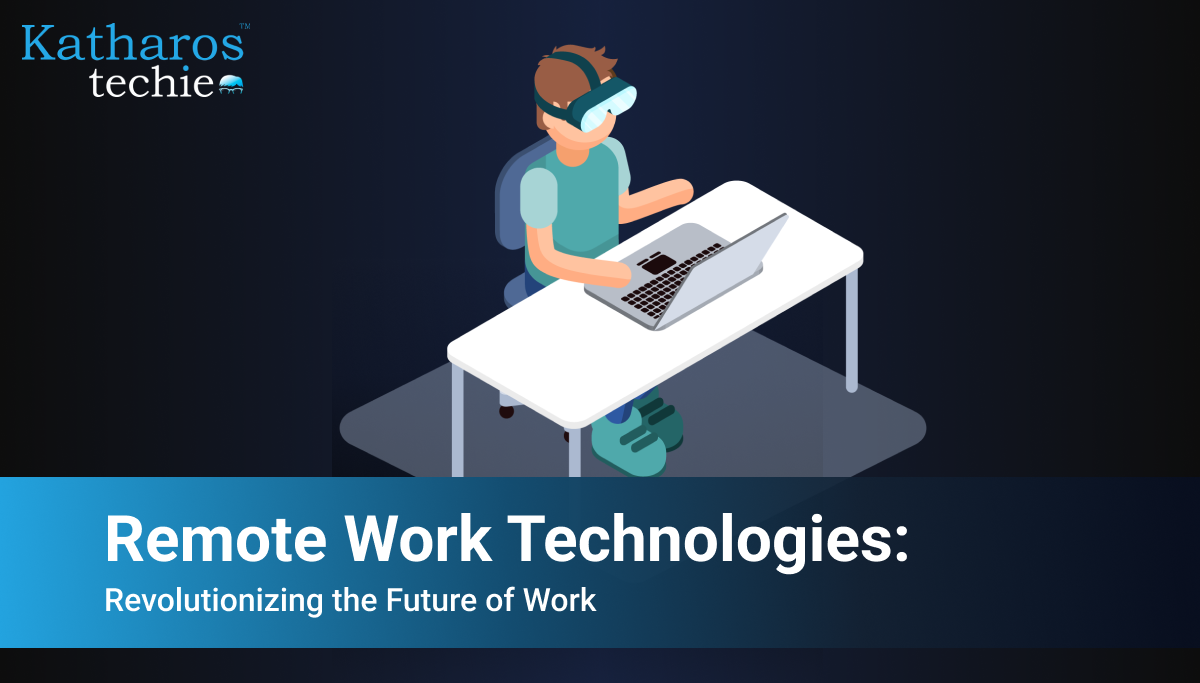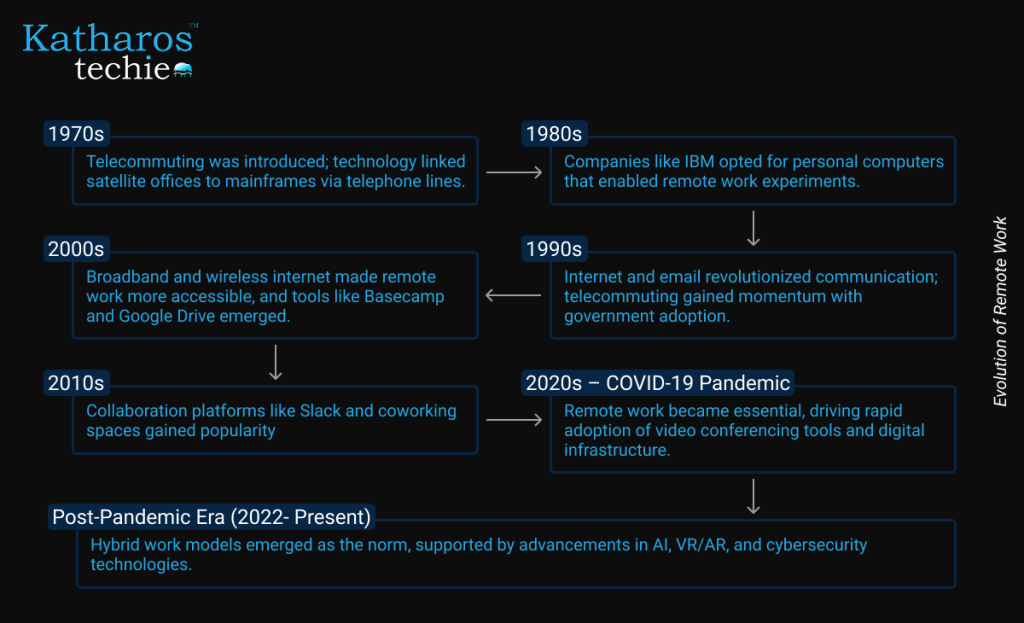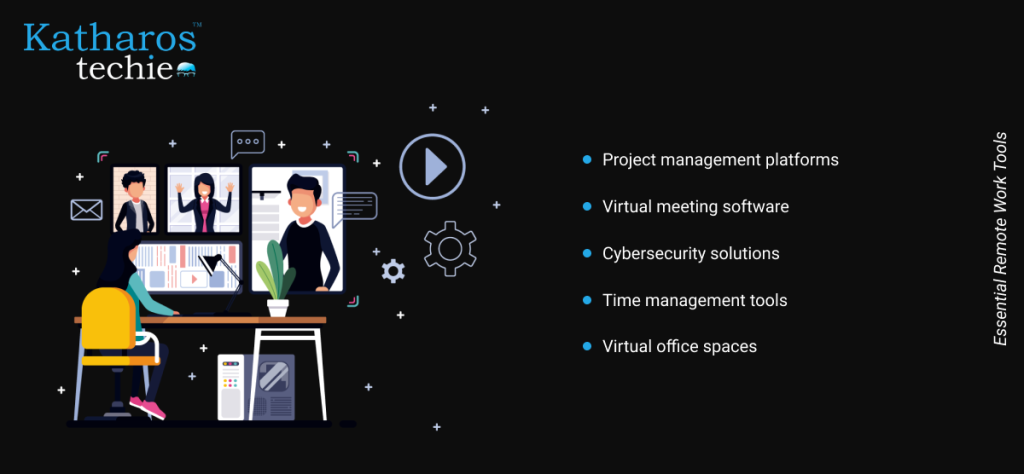
Remote Work Technologies: Revolutionizing the Future of Work
By Ankita Das

Remote work technologies are transforming how we work, making it easier than ever to collaborate, stay productive, and connect with teams across the globe. These innovations, like virtual reality tools, AI-powered platforms, and faster internet connectivity, are breaking down traditional office boundaries and redefining what it means to have a workplace. They’re allowing people to work from anywhere while enhancing efficiency and security.
But, as exciting as this shift is, it comes with challenges. Businesses need to think carefully about how they adopt these tools to ensure team cohesion, protect sensitive data, and make sure everyone has access to the same opportunities. In this blog, we’ll explore how these technologies are revolutionizing the future of work and share practical tips for using them effectively. Let’s dive in to see how organizations can embrace this change responsibly.
Understanding the Rise of Remote Work

Remote work has evolved from a necessity to a preferred working model, driven by technological advancements and shifting workplace priorities. Historically, before the Industrial Revolution, artisans and tradespeople worked from home, seamlessly blending living and working spaces. However, the rise of factories and corporate offices shifted work to centralized locations. The concept of telecommuting emerged in the 1970s, pioneered by Jack Nilles, as technology enabled employees to work away from traditional offices. The introduction of personal computers, the internet, and collaboration tools in the 1990s and 2000s further fueled this shift. Later in 2020, the COVID-19 pandemic acted as a major catalyst, normalizing remote work on a global scale.
Recently, hybrid work models have emerged as a transformative approach, blending remote flexibility with in-office collaboration to meet modern workforce needs. These models gained traction during the pandemic and have become a strategic imperative for organizations worldwide. Approximately 64% of companies now operate on hybrid schedules, offering employees autonomy while fostering teamwork.
Remote work enhances productivity, improves work-life balance, and reduces employee burnout, while employers benefit from cost savings and access to global talent pools. As technology advances, remote and hybrid work models are expected to remain integral to the future of work, reshaping traditional workplace dynamics and fostering innovation.
Essential Remote Work Tools for Increased Productivity and Collaboration

Remote work success relies heavily on the right tools, designed to enhance productivity, collaboration, and security. These tools empower employees to work efficiently from anywhere, ensuring seamless communication and task management.
From organizing projects to safeguarding sensitive data, they cater to diverse needs in remote work environments. Below are key tools essential for remote work setups:
Project Management Platforms
Project management platforms streamline task organization and team collaboration, ensuring projects stay on track. Tools like Trello and Asana help teams assign tasks, set deadlines, and monitor progress. Basecamp equips remote teams with efficient tools for scheduling, documentation, and tracking complex workflows.
Virtual Meeting Software
Virtual meeting tools enable seamless communication across remote teams. Zoom facilitates high-quality video conferencing with large participant capacities, while Microsoft Teams integrates chat, video calls, and file sharing. Tools like Krisp enhance audio clarity by removing background noise during virtual meetings.
Cybersecurity Solutions
Cybersecurity tools protect sensitive data in remote work environments. VPNs like NordVPN secure internet connections, while antivirus software such as McAfee prevents malware attacks. Multi-factor authentication tools add an extra layer of security for accessing company systems remotely.
Time Management Tools
Time management tools help employees track productivity and manage schedules effectively. Toggl Track allows users to monitor time spent on tasks, while Calendly simplifies scheduling meetings without back-and-forth emails. These tools enhance efficiency and reduce time wastage.
Virtual Office Spaces
Virtual office platforms recreate the collaborative feel of physical offices for remote teams. Tools like PukkaTeam simulate office interactions through virtual avatars and live video feeds, fostering team cohesion despite physical distance.
As organizations embrace remote work, these tools ensure seamless operations while addressing communication gaps and security risks. Transitioning to a well-equipped remote setup empowers teams to thrive in the modern workplace.
Long-Term Implications of Remote Work Environment
The shift to remote and hybrid work models has profound long-term implications for company culture and performance management. As organizations adapt to these changes, they must address challenges while leveraging opportunities to maintain productivity, innovation, and employee engagement.
Impact on Company Culture and Communication Strategies
Hybrid work reshapes company culture by reducing daily in-person interactions, making it harder to foster collaboration and innovation. Informal exchanges, like watercooler conversations, often drive creativity but are less frequent in hybrid settings. Managers must use intentional communication strategies like regular virtual check-ins and team-building activities. Tools like Slack or Microsoft Teams can help sustain connectivity while promoting inclusivity among remote and on-site employees. Additionally, organizations must align cultural values with flexible work policies to ensure employees feel engaged and connected despite physical distance.
Performance Management Adaptations
Traditional performance management systems require significant adaptations to suit hybrid work environments. Remote work demands a shift from monitoring hours worked to evaluating outcomes achieved. Managers increasingly rely on goal-setting frameworks like OKRs (Objectives and Key Results) to measure performance objectively. Regular feedback sessions via virtual platforms ensure employees stay aligned with organizational goals while addressing challenges promptly. Advanced analytics tools also help track productivity trends without micromanaging remote workers.
With hybrid models rising, companies must balance flexibility with strategies to maintain culture and optimize performance. By addressing these challenges proactively, organizations can create sustainable work environments that support long-term success in a rapidly evolving workplace.
Final Thoughts
Remote work is no longer just a trend, it’s the future of work. With advancements like AI-powered tools, 5G connectivity, and virtual collaboration platforms, remote work has become a permanent fixture in modern employment. These innovations empower employees to work from anywhere while enabling employers to access global talent, reduce operational costs, and enhance productivity. As businesses continue to embrace remote and hybrid models, they must adapt to evolving trends and leverage technology effectively. Ready to transform your workplace? Discover how remote work technologies can drive success today.